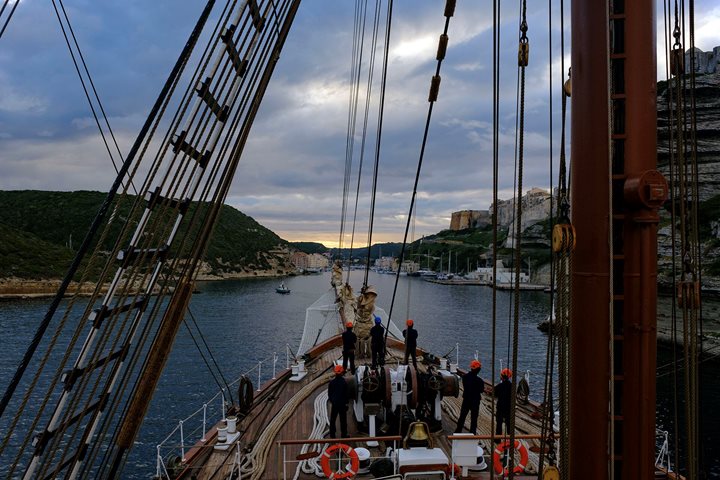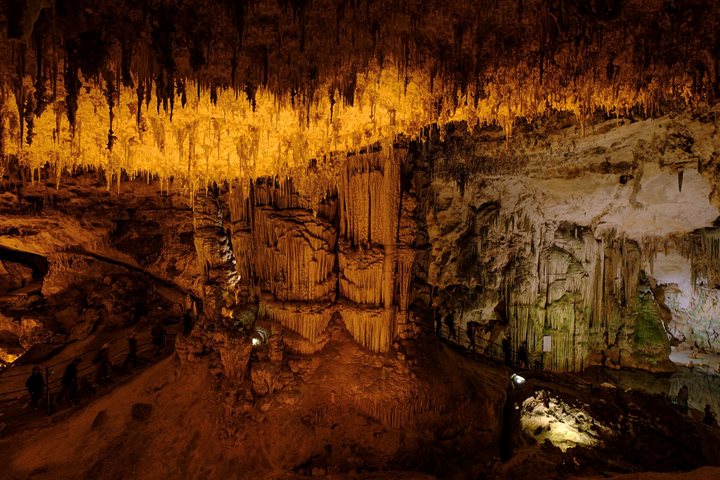The sun rose was at 7:15AM and the sea was virtually flat. We had a mild breeze but were hoping it would improve so we could sail. And sure enough, by 8AM Captain Komakin called the sailors to their stations and we were shortly at sail. The wind improved and we were sailing by the fabled coast of Cartagena by 9AM. Our National Geographic photographer, Massimo Bassano, gave a lively talk on how stories are constructed in the National Geographic magazine.
Cartagena, as it name suggests, is a sister city of the more famous Carthage (the name in the Punic language means “New City”) in Tunisia. The settlement of the Mediterranean by the Carthaginians would require a long volume. In short, the first settlement at Carthage was established by Queen Dido in 814 BCE who fled her native city of Tyre because her ruthless brother King Pygmalion was seeking to kill her. Our Iberian Cartagena was founded by a Carthaginian named Hasdrubal the Fair centuries later in 227 BC. It is also the city that the famed military strategist Hannibal landed in enroute with his troops and elephants to cross the Alps and attack Rome. Cartagena remained a Phoenician trading city until the Romans, under their great general Scipio Africanus, defeated the Carthaginians in the Punic Wars and renamed the city Carthago Nova (New Carthage).
After lunch we began our visit to the fabled city of Cartagena. We had a nice short coach tour of the city followed by a very fine tour of the Roman theatre. The theatre was built during the reign of Caesar Augustus ca. 5-1 BCE and could seat up to 7,000 spectators. Roman builders often used the rear of a hillside to erect the seats. Roman theaters have a semi-spherical shape that provides the best acoustics – remember there were no mics and, if you wanted to please the folks in the rear, they needed to hear you. The theatre was completely unknown until the city decided to build a Center for Local Crafts in the late 1980s and some serendipitous digging found Roman artifacts. They removed the existing urban structures and discovered this beautiful theatre. Today the theatre and its accompanying museum are popular and the theatre used for concerts. The actors all wore masks and the characters of the play were recognizable by their mask. For example, for the Greek play Oedipus Rex, a favorite, the lead actor who played Oedipus wore a mask which had his eyes smeared with red ochre to represent his self-blinding.
After our visit to the theatre, we had some free time to stroll the lovely streets and alleys of this spotlessly clean city. Many enjoyed coffees, ice creams, and just sitting in the sidewalk cafes. We all gathered to meet in the opulent modern Baroque city hall (built ca. 1908) where we were given a tour of its lovely rooms. The entrance had a dual staircase made of a brilliant and sumptuous white marble. Despite its considerable size it seemed to hang suspended in the air.
Returning to the Sea Cloud, we enjoyed a wonderful Spanish tapas dinner with Paella Valenciana as the star attraction.









